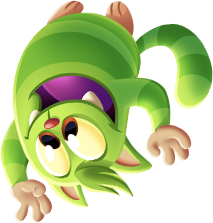Time for Talent – with Riccardo Argiolas
Hi, my name is Riccardo, it’s nice to e-meet you! 👋

I’ve been part of Tactile for about four and a half years, working as a Gameplay Programmer. I started on Lily’s Garden, where I helped bring new content and features to the game. Later, I joined our Content Tools team, supporting designers and artists in shaping their creative visions. Most recently, I moved to the prototyping team, exploring new concepts and developing fresh game ideas.
As a programmer, I collaborate with colleagues across many different disciplines, so my work ranges from implementing UI to bringing gameplay designs to life.
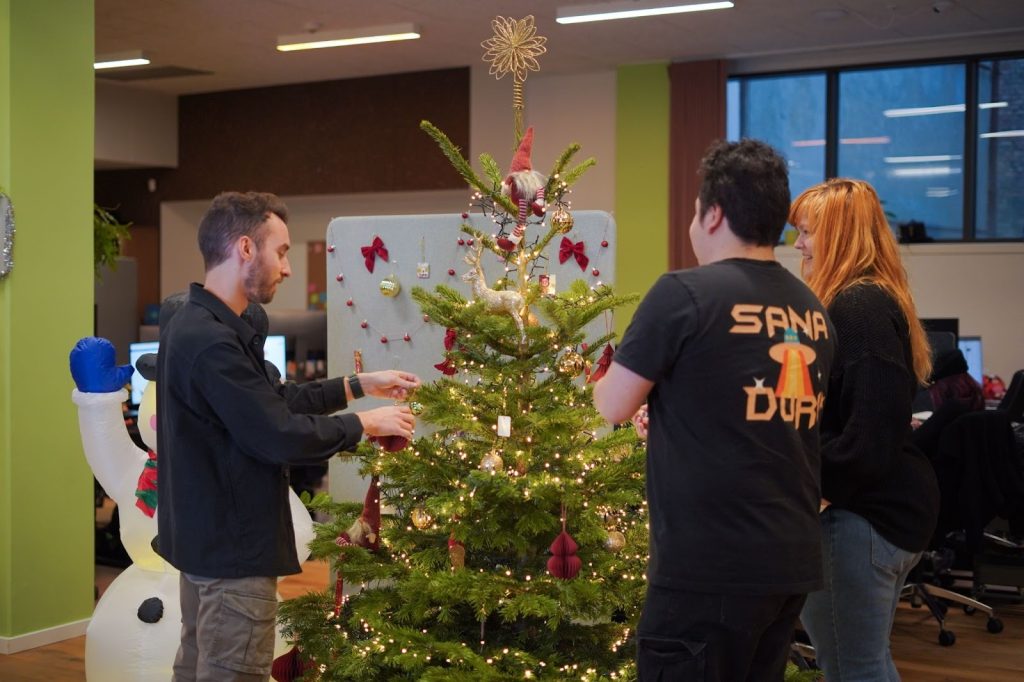
🚀 Before Tactile
I’ve always loved not just playing games, but also creating them. As a kid, I was endlessly curious about board games and video games, always wanting to tweak them or invent my own versions.
Over time, this curiosity expanded into a passion for electronics and robotics. I spent countless hours designing circuits, soldering components, and programming microcontrollers, trying to make my little creations come to life.
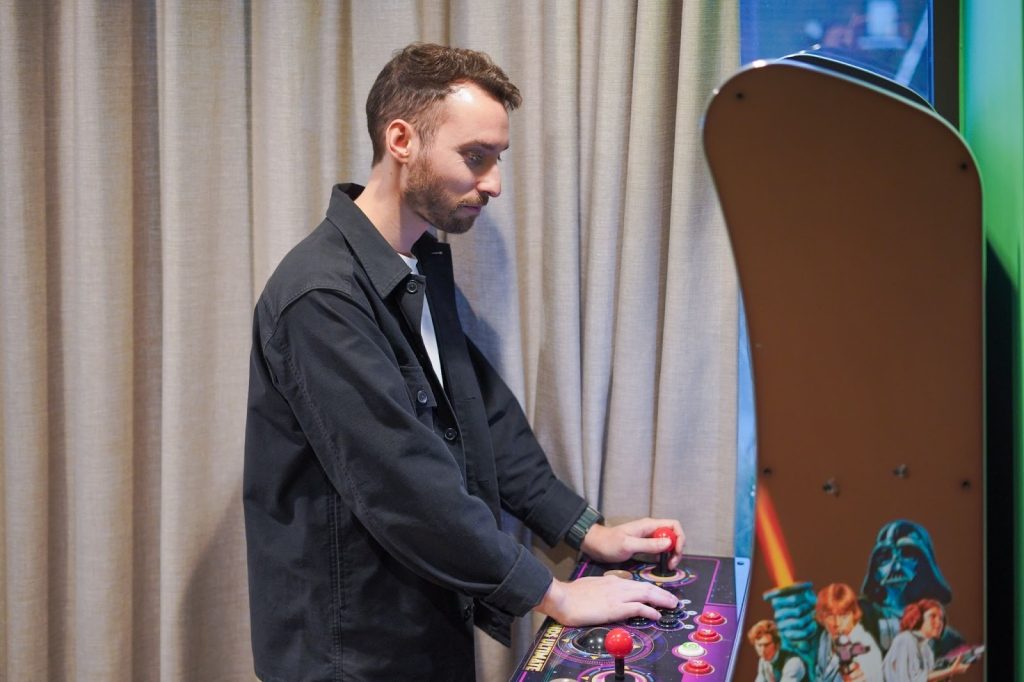
After university, I decided to combine my creative interests with my technical ones, and that’s when I entered the games industry. I first worked as a gameplay designer, but soon realized I missed the technical side of development. That led me to move toward more technical design roles and eventually fully into gameplay programming.
💜 Joining Tactile
Joining Tactile has been a major step in my career. I’ve had the chance to work with highly experienced colleagues, learning from them in both hard and soft skills. The scale of the projects here has taught me how to structure and maintain code in a way that keeps it robust, readable, and enjoyable to work with.
Changing teams throughout my time at Tactile has also given me the chance to experience game development from many different angles. Each move – from a live game team, to internal tools, to rapid prototyping – came with its own rhythms, challenges, and ways of thinking. Shifting between these perspectives kept the work fresh and exciting, and it pushed me to adapt, learn new approaches, and see how all the pieces of development fit together.
On top of that, I’ve benefited from internal workshops, book clubs, and knowledge-sharing sessions that have given me new perspectives on how to solve problems and improve my craft.

💪 Having an impact
For me, the best part of working at Tactile is the people. It’s not only about competence and learning opportunities – it’s about how seamlessly ideas flow. Communicating, sharing opinions, and giving and receiving feedback happens naturally and genuinely. This environment makes it easy for me to contribute with my own ideas and grow both personally and professionally.
Being able to collaborate closely with my teammates is what makes the work truly rewarding, and I think that shows in the products we create together.
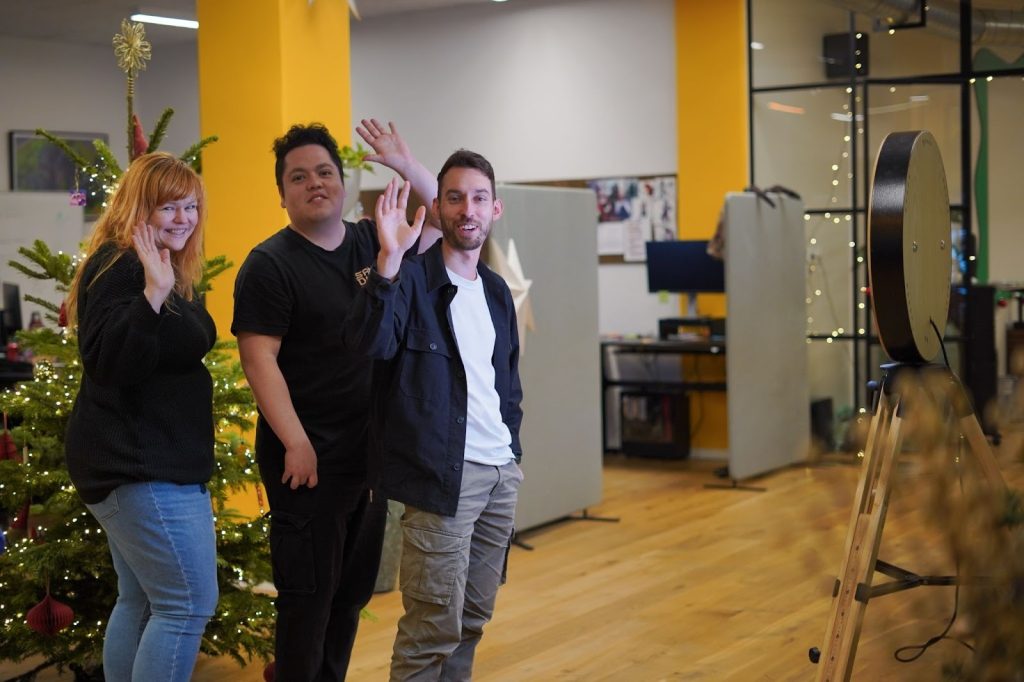
📚 The keys to success
🏗️ Be curious, and make things! Try building small games, join a game jam or two, talk to people, hear their stories, and learn from those experiences.
🗣️ I remind myself that success isn’t just about hard skills – soft skills matter just as much, and sometimes even more. Writing good code is important, but so is communicating clearly, understanding others, and learning how to turn ideas into reality.
🤝 A key to growth is embracing collaboration. Even a simple conversation with a colleague can reshape a problem or spark a new idea. Asking questions, sharing early drafts, and working through challenges together has always helped me reach better solutions than working in isolation.
It’s Time for Talent – With Pelinsu Ayas
Hi, my name is Pelinsu, it’s nice to e-meet you! 👋

I joined Tactile in February 2025 as a Level Designer, and I can’t believe it’s already been nine months, it’s flown by! I design levels for Lily’s Garden, creating experiences that bring joy to our beloved players.
💡As level designers, we collaborate closely with data scientists, QA engineers, gameboard artists, developers and producers. Our role is to bridge creative vision and player experience, translating data-driven insights into engaging gameplay. Beyond designing levels, we also design new gameboard mechanics, haptics, difficulty curves, and A/B tests to ensure a smooth and engaging journey for our players.
🚀 Before Tactile
Ever since I was a kid, I dreamed of creating products that people would enjoy and spend quality time with. That passion led me to study Industrial Design. This was long before I even knew that “level design” was a possible career path!
During my studies, I discovered a love for designing digital products, especially through research and A/B testing. That curiosity for digital experiences, where a single design decision could impact millions of people completely hooked me.
With this knowledge, I joined the gaming industry. I started working as a level designer at Peak Games where I worked on a game called Toy Blast. Later on I joined Space Ape Games where I designed levels for a game called Chrome Valley Customs. Both games taught me a lot in terms of the gaming industry and level design. Despite both being casual Match-3 games, level design approaches and mechanics were quite different.
Working on both an established title and a brand-new game gave me the rare chance to see the full spectrum of product development and apply my product design background in meaningful ways.
After some time in the industry, I started looking for opportunities that would allow me to work more closely with a wider variety of stakeholders. I’d known about Tactile Games for a while, and when this opportunity came up, I knew it was the right next step for me.
💜 Joining Tactile
When I joined Tactile, I had a very smooth transition from London, where I was based at the time, to Copenhagen. Everyone was very helpful, kind and welcoming! I also already knew some of my future colleagues from my previous workplaces, which was a really nice plus.
Before Tactile, I worked in smaller teams and within more traditional work models. At Tactile, our team spans different countries and time zones, and adapting to this diverse, flexible setup has been a really rewarding experience.
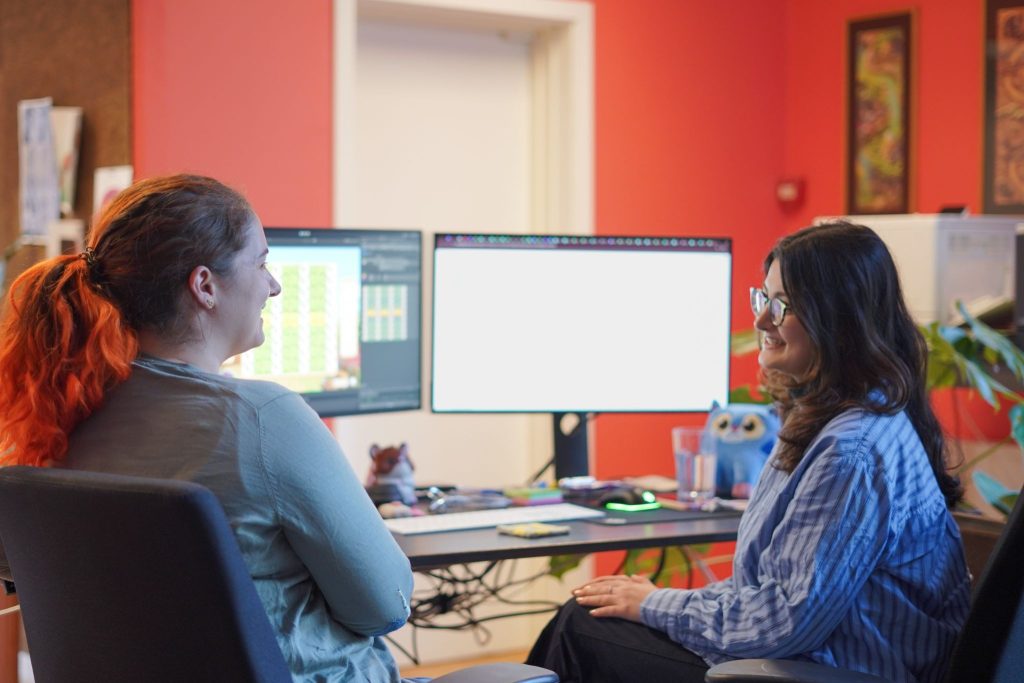
We’re an agile and dynamic team. Whether it’s a quick 10-minute sync to solve an issue or adjusting our plans to tackle something urgent, we move fast and collaborate deeply. That adaptability is essential in today’s gaming industry, and I love being part of such a responsive and forward-thinking environment. Our team also got bigger, so now we have more capacity to experiment and innovate.
💪 Having an impact
My team is responsible for everything relating to our in-game gameboard. This means that we are designing new levels, blockers and gameplay mechanics, adjusting level difficulties, as well as designing and maintaining a variety of A/B tests all with the aim of improving our player experiences.
The most rewarding part for me is seeing how our work directly impacts players. There’s nothing quite like looking at the data after a release or an A/B test and seeing positive results, or spotting enthusiastic player feedback about a level or mechanic we designed. That’s the kind of motivation that makes me want to keep pushing boundaries.
Within my team, we have a strong culture of collaboration, which comes to everyone quite naturally and intuitively. In my opinion, this is very important and something that is not easy to find. It’s rare to have such high levels of shared creativity.

🗝️ The keys to success
If you are a designer aspiring to join the gaming industry, my only recommendation would be that you follow the latest trends in the industry and identify where your unique skills can make a difference. The industry is incredibly dynamic, which makes it exciting, but also challenging.
When you play games, try to think like a designer. Observe what works well, what could be improved, and what you personally enjoy. Imagine how you would design that level or mechanic differently. This mindset will naturally sharpen your design intuition and creativity.
As a final thought, collaboration, as well as giving and receiving feedback are keys to being successful as a level designer and team player. Having these soft skills are as important as having the technical skills.
Every level, every blocker, every A/B test can be improved, and being open to discussing improvements makes the process both more efficient and far more enjoyable. When ideas flow freely, creativity thrives and that’s where strong collaboration really happens.
Time for Talent – With Mads Brandt
Hi, my name is Mads, it’s nice to meet you! 👋

I joined Tactile in May 2025 as a Frontend Engineer on the Core team.
The Core team plays a big supporting role across Tactile. We build and maintain the internal tools that keep everything running smoothly – from dashboards for the Data and Marketing teams to build systems and LiveOps tools. Our work connects so many parts of the company, and I love that what we build behind the scenes has such a wide impact across Tactile.
I also work closely with the other frontend engineers and product designers on cross-team projects like our internal design system, where we focus on creating a cohesive and consistent user experience across all our internal tools.
🚀 Before Tactile
It wasn’t exactly a straight line to becoming a developer for me. I’ve always been good with computers, but I actually started out studying marketing – which luckily turned out not to be for me, so I dropped out. After a few years of working in a supermarket, I decided to follow my curiosity for tech and applied for Computer Science.
That’s where I really found my passion for software development. Most of our classes were in Java, but I was always more drawn towards JavaScript and React, crafting frontends that not just functioned, but felt great to use. During an assignment on one of the first semesters we had to build frontends using static Java Server Pages (JSP). I couldn’t help experimenting a bit, so I figured out how to inject jQuery into them to make the pages dynamic.
While studying, I joined an InsurTech consulting company as a student developer and later continued there full-time as a backend Java consultant with a little bit of frontend. Over the next three years, I transitioned from the backend to solely frontend development, eventually becoming the Frontend Lead.
By early 2025, I was ready for something different – something bigger, more creative, and with more focus on how we build things and doing it the right way. I wanted to work with more frontend engineers to learn from and spar with, and a culture where taking the time to do things properly isn’t seen as a luxury but as part of the job. That’s when I found Tactile.

💜 Joining Tactile
When I joined Tactile, it was quite a change. I went from a company of around 40 people to one with more than 350 – over 200 in Copenhagen alone, and representing more than 50 nationalities. It’s almost rare to be a Dane here, and even rarer to be born and raised in Copenhagen like me. I love that, though – it gives the office such an international, inspiring energy with talents from all over the world.
Tactile doesn’t just hire for skills – we hire for culture fit, and we really mean it. We even have a culture book. From day one, everyone – not just my own team, but people on my floor and even across the whole building – has been incredibly welcoming. It really rubs off on you and creates an atmosphere where you actually want to collaborate, ask questions, and help each other improve.
The learning curve has been (and still is!) a bit steep when diving into data science related topics like dimensions, measures, aggregators, granularities, and data marts – but it’s incredibly rewarding to see how our frontend tools can help make that complexity more approachable.
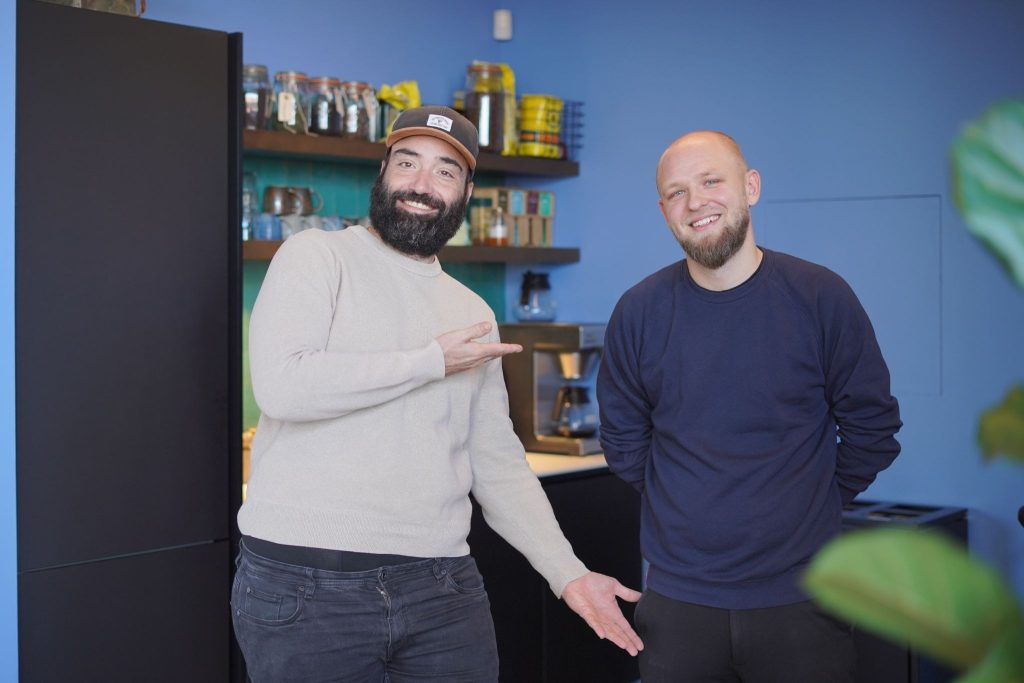
💪 Having an impact
Within Core, we have different sub-teams. I am on the Data and Marketing team focusing on tools for these two teams.
My main gig is a major redesign of our Data Dashboard – the tool which our analysts use to reveal insights into player behavior across our games, and make data driven decisions. The original dashboard was developed years ago, mainly by backend engineers, and most frontend work since then has focused on the LiveOps Dashboard – so the Data Dashboard was definitely ready for some love
Before I joined, our product designers had created a completely new design that makes the process easier to follow and aligns with the LiveOps dashboard — and my job has been to bring that design to life.
Even though I work closely with the other frontend engineers on shared systems, code reviews etc. the Data Dashboard has become my project in a way. I really enjoy that sense of ownership, especially when I see how it can help others. Tactile is an extremely data-driven company, so it’s rewarding to know that the tools I build play a part in the insights that shape our games. But honestly? The best part is working with people who care as much about doing things well as getting them done.
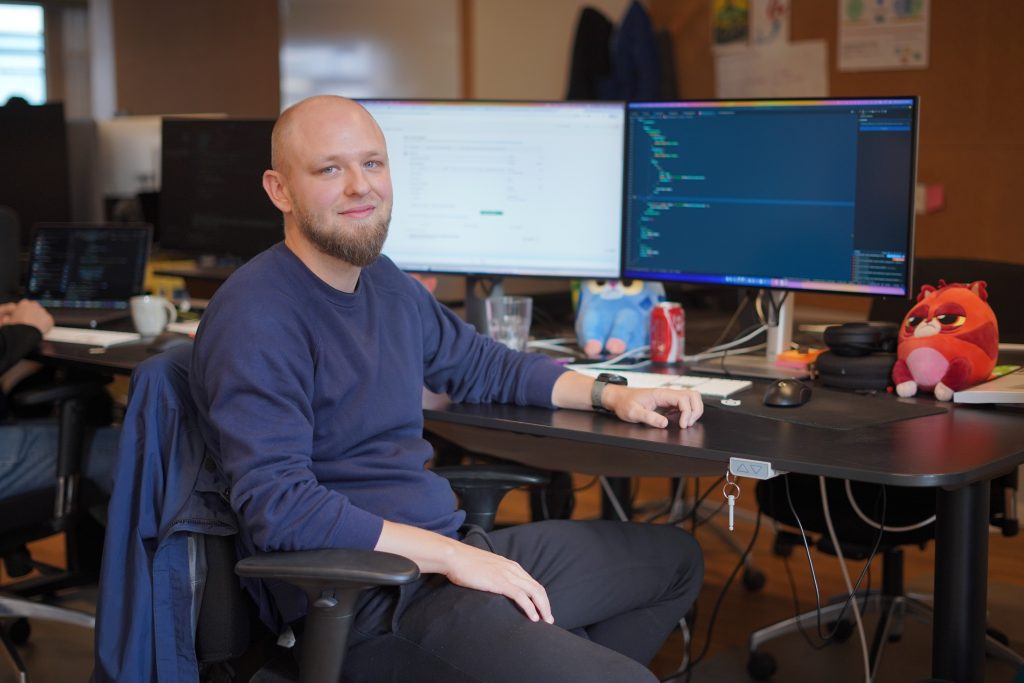
📚 The keys to success
Hmm, stay curious and keep building things, even small projects. The best way to learn is by experimenting, breaking stuff (yes, we all make bugs!), and figuring out why it broke.
Don’t get too hung up on using the “perfect” tech stack or chasing every new trend. No codebase is perfect. There’s always legacy code, trade-offs, and things you’d love to refactor. At Tactile, we focus on improving things gradually; upgrading, cleaning up, and maintaining while still moving forward. You simply cannot be on the cutting edge all the time, especially in frontend, where sometimes it seems that what’s “in” last week might be deprecated today. What matters is writing solid, maintainable, clean code and keeping a steady pace of improvement.
Lastly, don’t underestimate the importance of communication. Writing good code is one thing, but explaining your ideas clearly, arguing for your choices, and collaborating with others is just as valuable – at Tactile, this matters just as much as your technical skills. The people who grow fastest are often those who ask questions and aren’t afraid to admit when they don’t know something. Find a place where that’s celebrated – it makes all the difference.
